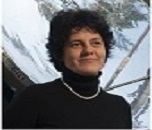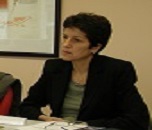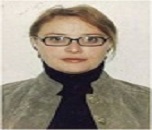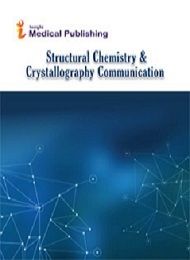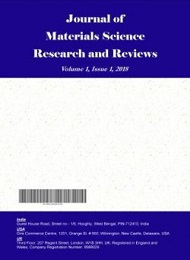Theme: Structural innovation of Crystals and Novel Materials using latest Crystallographic methods
Crystallography Congress 2019
We are excited to announce our “5th International Conference on Crystallography & Novel Materials” to be held November 18-19, 2019 in Helsinki, Finland. The theme of our conference is “Structural innovation of Crystals and Novel Materials using latest Crystallographic methods”. Crystallography Congress 2019 initiates a world technical crystallography congress to learn about the latest development and different techniques, as well as how to launch new applications of novel materials and technologies in crystallography.
This conference provides a perfect symposium for the world-wide scientists, engineers, directors of companies and students in the field of Materials science and Crystallography to meet and share their knowledge. We will be happy to bring together experts from different countries and exchange their views, reinforce knowledge base, and learn new concepts. With the participation of outstanding international experts prompt keynote presentations, Oral talks, Poster presentations and Exhibitions. We sincerely invite you to join us and your presence will certainly add value to the conference and very much appreciated!
Why to attend??
The “5th International Conference on Crystallography & Novel Materials” will focus on latest research on different topics like Protein crystallography, Crystallography in Material Science, Chemical Crystallography, Crystallography in Materials Science, Electron crystallography, Crystallography congress invites you for Keynote talks, plenary talks, symposium , workshops, invited sessions and oral and poster sessions from various universities and associations. This will be the best opportunity to outreach the large gathering of participants from all around the world and get name recognition at this two-day event. World-eminent speakers, most recent researches, latest techniques and the advanced technologies in crystallography using novel materials are the principal features of this conference.
Target Audience:
- Eminent Scientists from Materials Science
- Directors of companies
- Materials Science Engineers
- Nanotechnology Engineers
- Researchers from Mining and Metallurgy field
- Chemistry Research Professors
- Young research fellows from Universities
- Chemical Engineering Students
- Chemical Engineers and Ph.D. scholars
- Associate Professors
- Members of different Materials science Associations
- Delegates from Metallurgy Industries and many more….
Track 1: Crystallography in Material Science
Material Science is the application of physics and various branches to describe the properties of materials. It is a combination of Physical sciences such as solid mechanics, solid state physics, and materials science. Crystallography is used by materials scientists to characterize different materials. In a form of crystals, the drawbacks of crystalline arrangement of atoms are easily visible to see macroscopically, as the natural shapes of the crystals will reflect the atomic structure. Materials Science in chemistry includes the synthesis of different crystals and study of materials that have very useful magnetic, optical, electronic and mechanical properties. Material science has a broad range of applications like includes composites ceramics and polymer materials. Some materials that have been analysed crystallographic ally, such as proteins, do not occur naturally as crystals. Materials Science role in crystallography is a scientific discipline used to find the properties of different crystals and also expanding to crystals, composite materials. It also involves in the recent discovery, development and designing of new materials.
Track 2: X-ray Crystallography
X-ray Crystallography is a scientific method used to determine the arrangement of atoms of a crystalline solid in three dimensional (3D) spaces. This technique makes use of the interatomic spacing of many crystalline solids by employing them as a diffraction gradient for x-ray light. X-ray crystallography is the application used for neutron scattering to the find the atomic or magnetic structure of any crystal or material. The process of determination of a sample is done by placing the sample in a beam of thermal or cold neutrons to observe a diffraction pattern that gives details about the structure of the material. This neutron diffraction technique is same as X-ray diffraction but of their different scattering properties, neutrons and X-rays will give the same information about the beams X-Rays are mostly used for the high resolution analysis of strong x-rays from synchrotron radiation that are mostly used for the shallow depths or thin specimens but neutrons have high penetration depth.
Track 3: Crystallographic computing
In this method crystal computing is fundamental methods used for the formation of the different crystals. There are various techniques available; they are most frequently used and have been selected for the axis transformations and geometric calculations of the single crystal — bond angles, torsion angles, distances between principal axes of the quadratic forms, metric considerations on the lattices and structure factors. The most widely used method in computing is the least squares method and it has main crystallographic applications while attention is also related to some different techniques. This computing method also covers the reciprocal lattice, which is very useful in diffraction geometry.
Track 4: Crystal Growth and Crystallization
The crystal or any material growth is a most important part of a crystallization process, and it consists of new atoms, ions, or polymer strings into the characteristic arrangement of a crystalline called the Bravais lattice. The crystal growth always follows an initial stage of both homogeneous and heterogeneous (surface catalysed) nucleation. X- Ray beams are used to examine the basic properties of solids, fluids or gels. Photons will interact with electrons, and give information about the vacillations of electronic densities of the different matter. The process of crystal growth produces a crystalline solid whose atoms or molecules are typically closely packed, with fixed and same positions in space relative to one another. The crystalline state of matter is differentiated by a distinct structural rigidity and high resistance to deformation. Many crystalline solids have high values of Young's modulus and shear modulus of elasticity. These are same with most liquids or fluids, which have a low shear modulus, and also exhibit the macroscopic viscous flow.
Track 5: Chemical crystallography
Chemical crystallography is an application of diffraction techniques to the study of structural chemistry. A frequent purpose is the identification of natural products, or of the products of synthetic chemistry experiments; however detailed molecular geometry, inter molecular interactions and absolute configurations can also be studied. Different chemical Structures are studied as a function of temperature, pressure, application of electromagnetic radiation, magnetic or electric field: these kind studies comprises of only small minority of the total structures. The single crystal is used in x-ray diffraction to find the structure of a chemical compound that has been historically classified as 'Chemical Crystallography'. Most of these difficulties can be mostly overcome by employing more powerful radiation sources as the extent of diffraction depends on the number of electrons an atom has, and finding the positions of hydrogen atoms using X-ray diffraction can be difficult.
Track 6: Crystallography in Biology
Biology in Crystallography is the structural biology that helps us to see the detail that are missing from the view and also consequently as a powerful tool to unpick the intricate and also exquisite choreography of life. For centuries, we have been able to visualize structures inside a cell, but even the most powerful microscopes are limited in the detail they provide, either by the sheer physical boundaries of magnification, or because the samples themselves are not alive and working. Structural biology methods delve beneath these limits bringing molecules to live in three Dimensions and into sharper focus. It has reached to the very limits of how a molecule works and how its function can be modified. Proteins are built with a DNA template and the string of amino acids then synthesized into very complex loops, sheets and coils – it might be seen like a tangle, but these structures indicate how the protein will interact with other structures around it in order to undertake its role in the cell. The elegant structures of crystals and the complexes that are formed can be breath-taking in their logic and symmetry, but they are also useful in helping us to understand how cells actually work. Most of the shapes, sizes and assemblies of molecules can be assigned to various compartments in cells and thus put into context with their surrounding environment.
Track 7: Nuclear Magnetic Resonance (NMR) Crystallography
Nuclear Magnetic Resonance (NMR) crystallography is a type method that uses primary NMR spectroscopy to find the structure of different solid materials in the atomic scale. So the solid-state NMR spectroscopy will be used primarily, and possibly supplemented by quantum chemistry calculations (e.g. density functional theory), powder diffraction etc. If crystals is grown is properly and uniquely, any crystallographic method can generally be used to determine the crystal structure and in case of organic compounds the molecular structures and molecular packing. The main use of NMR crystallography is in determining micro crystalline materials which are used to this method but not to X-ray, neutron and electron diffraction. This is largely used because interactions that are short range are measured in NMR crystallography.
Track 8: Crystallography of Novel Materials
Novel materials have major roles in different fields of engineering; they are given by different structures and materials, to our knowledge to the physical and the virtual world. It should be obvious that all matters are made of crystal materials. From the past it can be seen that there are only about hundred different types of molecules in the entire world. There are same hundred different molecules that shape a great and many different substances including the air we inhale to metal the used to bolster many tall structures. Metals that carry unique property of pottery, and earthenware production are uniquely in contrast to polymers. The properties of materials depend upon the iotas that are utilized and how they are made together. The structure of different novel materials can be differentiated by the general extent of different elements. The nuclear structure of any novel material basically influences the substance's physical, warm, electrical, attractive, and optical properties. Also the micro-structure and macro-structure can influence these properties but they mostly affect the mechanical properties and the rate of concoction response. The properties of the novel material offer intimations with the structure of the different novel material.
Track 9: Experimental methods in Xâ€ray & Neutron Crystallography
Neutron Crystallography is a type of method that can supplement X ray-beam crystallography for the determination of small crystals, both inorganic, natural, and proteins, for example, the layer proteins, that have the substantial 3-dimensional precious stones are required for that procedure. Different protein structures are taken from either 2-dimensional sheets or helices, polyhedrons, or scattered individual proteins. Neutron can be used in the place of X ray-beams and on account of electrons interface more easily with molecules than that of X-Ray beams do. In this case, X-beams will go through a thin 2-dimensional precious stone that will be diffracting altogether, though electrons can be used to model a picture. On the other hand, the solid interaction between electrons and protons will make thick gems impenetrable to electrons. The major drawback in X ray-beam crystallography is when checking the stages in the diffraction design. As the X-beam focal point is predicted, it is hard to model a structure of the different gems that are being diffracted.
Track 10: Novel materials for Energy applications
The first law of thermodynamics, energy can neither be created nor destroyed. However we still need to be conservative in usage because of the efficiency, we cannot make full use of the energy. Large amount of energy is wasted. So how can we minimize energy waste and how can we reuse the wasted energy becomes critical in energy saving. Nanotechnology is considered to be one of the most important future technologies involving several disciplines of science including solid state physics, solid state chemistry, solid state ionic, materials engineering, medical science and biotechnology. Manipulating matter at the manometer scale, using building blocks with dimensions in the Nano-size range, makes it possible to design and create new materials with unprecedented functionality and novel or improved properties. Nanostructured materials made of Nano sized grains or nanoparticles as building blocks, have a significant fraction of grain boundaries with a high degree of disorder of atoms along the grain boundaries (or particle surfaces), and a large ratio of interface (or surface) area to volume.
Track 11: Structural Chemistry in Crystallography
Structural Chemistry plays major role in the field of Crystallography is related to structure, with primary focus on the field of structural chemistry. The scope of structural chemistry is very broad and offers interdisciplinary research results in crystallography and different kinds of spectroscopy. It also includes areas of crystal chemistry and physics and their role in molecular structure. This method provides the latest information in all related fields for effective and rapid communication among the audience which includes engineers, researchers and students. Structural chemistry highlights interesting research enabled by the determination, calculation or analysis of small-molecule crystal and molecular structures in the chemical sciences.
Track 12: Crystallography in Nanotechnology
Nanotechnology is a leading interdisciplinary science that is emerging as a distinctive field of research. Its advances and applications will result in technical capabilities that will allow the development of novel nanomaterial’s with applications that will revolutionize the industry in many areas. Nanoparticles are one of the cornerstones of nanotechnology. Indeed, even though the research in this field has been underway for a long time, many present and future applications are based on nanoparticles. The development of nanotechnology can be approached from several directions; microscopic physics, microelectronics, materials nanotechnology, and cluster science. The different possible structures include Nano rods, nanoparticles, fullerenes, nanotubes, and layered materials. The status and prospects of protein micro crystallography (MPX) at high brilliance synchrotron radiation sources are reviewed. We discuss emerging trends in miniaturizing sample environments for serial crystallography (SX) experiments allowing manipulation and positioning of biological objects down to Nano scale dimensions with low contact forces.
Track 13: Refinement of Crystal Structures
The development of the crystal structure has been more powerful development that has led to most important technological advancements in recent history of Crystallography. But the physical and computational means related to the enhancing computational capabilities at the device or material levels have also started making very challenging set of situation for keeping electronic devices cool, a most important factor in determining their speed, efficiency, and reliability. As there are many advances in Nano-electronics and also in the emergence of new application such as three-dimensional chip stack architectures and also in the flexible electronics, now than ever there are needs and opportunities for the novel materials to help in addressing some of these thermal management challenges and also in the future development of the novel materials.
Track 14: Polymer Crystallography
These methods uses two primary crystallographic techniques used for studying polymer structure, X-ray fibre diffraction analysis and polymer electron crystallography, are described in this chapter. X-ray fibre diffraction analysis is a collection of crystallographic techniques used to determine molecular and crystal structures of molecules, or molecular assemblies that form specimens in which the molecules, assemblies or crystallites are approximately parallel but not otherwise ordered. The theory and techniques of structure determination by X-ray fibre diffraction analysis are reviewed.
Track 15: Mineralogy and Geology- Role in Crystallography
Mineralogy is geological resources of major economic importance. Most of them are crystalline which explains the important role played by crystallography in their study. Minerals may occur either massive or forming characteristic geometric forms known as crystals. Max von Laue discovered the diffraction of X-rays by crystals and almost immediately diffraction methods were applied to the structural characterization of minerals. One early success of X-ray crystallography was the structural classification of silicate minerals. However, application of X-ray diffraction was not limited to minerals. It was soon used for the structural characterization of molecular crystals as well and, later on, even of proteins. Nowadays, crystallography is commonly employed in many branches of experimental sciences such as physics, chemistry, biochemistry, and geology among others. Mineralogy is basically the science of minerals, which includes their crystallography, chemical composition, physical properties, genesis, their identification and their classification. Mineralogy is one of the branches in science of Geology and there are also related subjects such as Nano materials, material science, and metallurgy and Nano science. We have reviewed the historical perspective of the science of mineralogy, cited some of the evidences for the prehistoric uses of minerals and rocks, and described some of the principle applications of the science of mineralogy.
Track 16: Inorganic and Mineral Crystals
Neutron diffraction scattering in inorganic crystals is the application used for neutron scattering to the find the atomic or magnetic structure of any crystal or material. The process of determination of a sample is done by placing the sample in a beam of thermal or cold neutrons to observe a diffraction pattern that gives details about the structure of the material. This neutron diffraction technique is same as X-ray diffraction but of their different scattering properties, neutrons and X-rays will give the same information about the beams X-Rays are mostly used for the high resolution analysis of strong x-rays from synchrotron radiation that are mostly used for the shallow depths or thin specimens but neutrons have high penetration depth.
Track 17: Protein Crystallography
The method protein crystallography is the new method that has a high-resolution X-ray sources that are currently made, like the LCLS in Stanford and the EXFEL in Hamburg, new methods of data acquisition may become possible only for the structural characterization of Nano-meter sized material that are made up to atomic resolution. In our computational crystallography there are subgroup that are developed for the new crystallographic methods and approaches for developing the ultra-fast structural changes in both micro- and macro-molecular structures and assemblies of both non-periodic or quasiperiodic type. This field of crystallography has been evolved together with the developments in computer science and molecular biology, making three-dimensional structure determination of complex or crystal faster and easy for biological assemblies in this method.
Track 18: Physical properties of Crystals
There are different properties of crystallography used to find the crystal diffraction and Precession electron diffraction (PED) is one of the methods to gather the electron diffraction patterns in a type of microscope called transmission electron microscope (TEM). Using this method the patterns are seen by processing an incident electron beam across the central axis of the microscope, then there is PED pattern that is formed by integration along the diffraction patterns. These patterns will produce a quasi-kinematical diffraction pattern that is mostly used as input for the direct methods algorithms to understand the crystallography structure of any sample or crystal.
Track 19: Crystallography Applications
Crystallography method is used to study different materials that form crystals like salts, metals, minerals, semiconductors, as well as various inorganic, organic and biological molecules. It is also used determine the electron density, the mean positions of the atoms in the crystal and their chemical bonds, disorder and various other information. Crystallography has been a used widely for the extraction of compounds in milk and any other types of information obtained through structure function relationship. Although more detailed information from X-ray analysis has been secured from substances which are commonly known to be crystalline, it has been surprising to find substances commonly thought of as being non-crystalline as actually having a partially crystalline structure and that this structure can be changed by heat treatment, pressure, stretching, etc. Casein is an example of the latter class of proteins. Stewart has shown that even solutions tend to assume an orderly arrangement of groups within the solution.
Track 20: Future challenges in Crystallography
Future challenges for crystallography in structure-based drug discovery are in the fields of data validation, data mining and data management. State-of-the-art validation methodologies in protein crystallography have been broadly documented. However, successful application of these validation principles requires continuous efforts. Easy-to-use and sophisticated tools for the critical assessment and realistic interpretation of macromolecular model coordinates are still in short supply. Advanced tools designed to tackle the mentioned pitfalls should be of particular interest. These include tools for the visualization and analysis of structure determination statistics, atomic displacement and translation liberation screw motions (TLS) parameters, and structural fluctuations, as well as validation protocols for verifying stereochemistry and agreement with the electron density of all heterogeneous regions of macromolecular models.
ME Conferences is glad to invite you to the upcoming “5th International Conference on Crystallography & Novel Materials” to be held November 18-19, 2019 in Helsinki, Finland. The theme of our conference is “Structural innovation of Crystals and Novel Materials using latest Crystallographic methods”. Crystallography Congress 2019 initiates world technical crystallography researchers to learn about the latest development and different techniques, as well as how to launch new applications of novel materials and latest technologies in the field of Crystallography and material Science.
Conference Highlights:
- Crystallography in Material Science
- X-ray Crystallography
- Crystallographic computing
- Crystal Growth and Crystallization
- Chemical crystallography
- Crystallography in Biology
- Nuclear Magnetic Resonance (NMR) Crystallography
- Crystallography of Novel Materials
- Experimental methods in Xâ€ray and neutron crystallography
- Novel materials for Energy applications
- Structural Chemistry in Crystallography
- Crystallography in Nanotechnology
- Xâ€rays diffraction by crystals
- Polymer Crystallography
- Mineralogy and Geology- Role in Crystallography
- Inorganic and mineral crystals
- Protein crystallography
- Physical properties of crystals
- Crystallography Applications
- Future challenges in Crystallography
Important and scope:
The Crystallization Market in crystallography is differentiated by various technologies, product, and end user. In the market, crystallization is further divided into protein purification, crystallization in biology, applied crystallization, and crystallography in novel materials. However, the crystallography and material science market will be seen in the highest growth in the next few years.
There are many factors that are propelling the growth of the Applied Crystallization & Crystallography Market will include the increase and also the immediate need for the high-resolution information on protein structures, technical advancements, and increasing R&D in the material science and biotechnological areas. And on the other side, the factors that influence restraining the growth of the market will include materials that are qualified, lack of generalized crystallization methods associated with the types of proteins and different crystallography techniques.
WHY HELSINKI, FINLAND:
Materials Science research and market development is rapidly growing world-wide and mostly in several Europe regions like France, Italy, Germany, London and many more. This Crystallography Congress 2019 conference aims to develop material science research and development in nanotechnology in Helsinki, Finland, by balancing the growth of the industrial, latest research and development sector in the country. Recently Finland has emerged in latest technologies in material science and nanotechnology sector due to the interest, education, investments and research.
Why to attend???
The Crystallization Market in crystallography is differentiated by various technologies, product, and end user. In the market, crystallization is further divided into protein purification, crystallization in biology, applied crystallization, and crystallography in novel materials. However, the crystallography and material science market will be seen in the highest growth in the next few years associations and industry in a variety of different fields including semiconductors, computers, chemistry, and novel materials and many more.
Crystallography Applications in Different Fields:
The field of Crystallography and Material Science across the globe has the major portion as it plays an important role in our day to day life as it is major topic which gives us idea about the developments in different technologies and techniques used for crystallography and different novel materials. Material Science field includes smart materials, emerging materials, nanotechnology, materials research, biomaterials and advanced materials. Chemical crystallography is an application of diffraction techniques to the study of structural chemistry and novel materials. There are many fields of study but the material research and structure are used for the characterization of different novel materials.

Global Market in Material Science Application:
The global market growth nowadays in the different fields of material science application in the most European and US market value is very much expected to cross more than 5 billion USD in the following years than the past. The European country Finland is one of the developed countries which is having profitable economic growth in Material Science industry and will be part of the European Union Market. Finland so far has shown rapid growth in material science and technology, nanotechnology, novel materials development, mineralogy and geology related research and it is expected to be one of the leading countries in Eastern Europe.

Major Associations and Societies around the Globe:
- American Ceramic Society
- American Association for Crystal Growth
- American Chemical Society (ACS)
- American chemical society division of polymer chemistry
- American Composites Manufacturers Association
- American Institute of Mining, Metallurgical and Petroleum Engineers
- American Iron and Steel Institute
- American Physical Society (APS)
- Asian Crystallographic Association (ACA)
- Association of Greek Chemists (EEX)
- British Crystallography Association (BCA)
- Chemical Society of Montenegro (HDCG)
- Croatian Crystallographic Association
- Czez and Slovak Crystallographic Association
- European Crystallographic Association (ECA)
- French Crystallographic Association (FCA)
- Indian Crystallographic Association (ICA)
- Japan Society for Composite Materials
- Latin American Composite Materials Association
- Materials Research Society
- Metal Powder Industries Federation
- Microscopy Society of America (MSA)
- Mining and Metallurgical Society of America
- National Science Foundation (NSF) under the Center for Sustainable Polymers
- Powder Metallurgy Association of India
- Royal Australian Chemical Institute
- Scandinavian Society for Biomaterials
- Serbian Chemical Society (SHD)
- Serbian Society for Ceramic Materials
- Slovenian Chemical Society (SKD)
- Society of Chemists and Technologists of Macedonia (SHTM)
- Turkish National Crystallographic Association
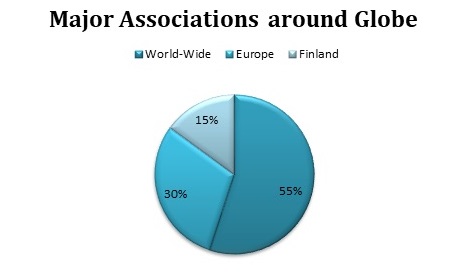
Top Universities in Finland:
- University of Helsinki
- University of Tamper
- Abo Akademi University
- University of Oulu
- Tampere University of Technology
- University of Eastern Finland
- University of Jyvaskyla
- University of Turku
- Aalto University
- Centria University of Applied Sciences
- Haaga-Helia University of Applied Sciences
- Häme University of Applied Sciences
- Humanities University of Applied Sciences
- University of Åland
- Southeast Finland University of Applied Sciences
- Metropolia University of Applied Sciences
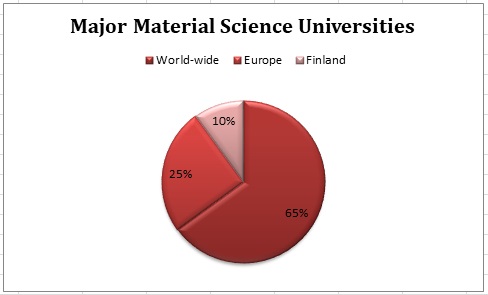
Future of Material Science Research:
The research categorizes the crystallography and novel materials market on the basis of technologies of different techniques and products (analysers and reagents), and end users pharmaceutical companies, biotechnology companies, government institutes, and academic institutions. On the basis of technology, the protein crystallization segment accounted for the largest share of the market. The availability of government and private funds, technological advancements, and growing research in the are related to structure-based drug design or material science are the factors that are mostly using the market in these regions.Also the increasing investments by the leading companies in these global markets, and increase in research and development activities of various technologies in material science.
Conference Highlights
- Crystallography in Material Science
- X-ray Crystallography
- Crystallographic Computing
- Crystal Growth and Crystallization
- Chemical Crystallography
- Crystallography in Biology
- Nuclear Magnetic Resonance (NMR) Crystallography
- Crystallography of Novel Materials
- Experimental methods in Xâ€ray & Neutron Crystallography
- Novel materials for Energy applications
- Structural Chemistry in Crystallography
- Crystallography in Nanotechnology
- Refinement of Crystal Structures
- Polymer Crystallography
- Mineralogy and Geology- Role in Crystallography
- Inorganic and Mineral Crystals
- Protein Crystallography
- Physical Properties of Crystals
- Crystallography Applications
- Future challenges in Crystallography
To share your views and research, please click here to register for the Conference.
To Collaborate Scientific Professionals around the World
| Conference Date | November 25-26, 2019 | ||
| Sponsors & Exhibitors |
|
||
| Speaker Opportunity Closed | |||
| Poster Opportunity Closed | Click Here to View | ||
Useful Links
Special Issues
All accepted abstracts will be published in respective Our International Journals.
Abstracts will be provided with Digital Object Identifier by





